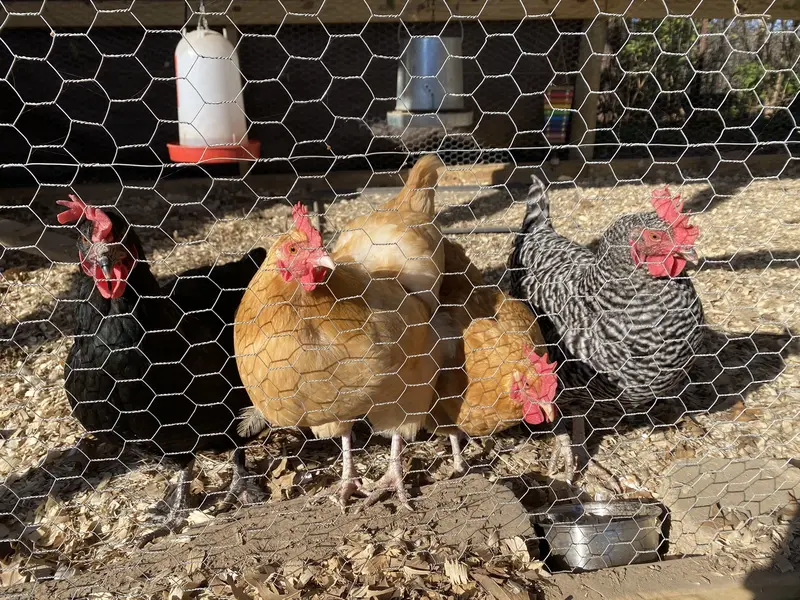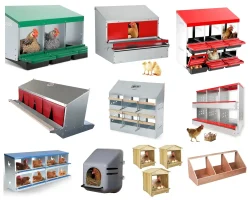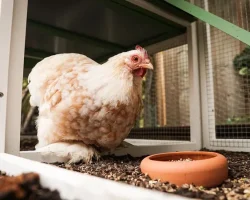When it comes to raising chickens, the fresh eggs, clucking companions, and slice of farm life in your backyard can be a greatly rewarding experience. With that being said, however, it is your responsibility to keep your flock safe from the elements, disease, and the threat of predators. This is why it is so important to have a predator-proof chicken coop. In fact, it is non-negotiable.
Whether you are brand new to raising chickens, or even one of the most seasoned chicken farmers, one thing is for sure: predators will come, and they will test every weakness of your setup to get to your chickens.
I would like to walk you through how you can build a coop that is both comfortable for your flock but also serves as a fortress against any unwanted visitors.

Step 1: Know Thy Enemy
Creating a solid predator proof chicken coop, it is one of the best ways to make sure that you understand the enemy. It is also important to realize that different areas can bring with them different threats, and that often these predators are more intelligent than one may think.
The Most Common Chicken Predators
Below is a short description of the most common chicken predators. Read my article Top 10 Chicken Predators and How to Protect Your Hens to learn more about these predators, their behaviour, and specific tips. Do you want to know more about wildlife, like what type of snake you found in your coop? Read more at Wildlife Trusts.
- Foxes & Coyotes will find the weak spot if there is one. They are both excellent diggers and when they attack, they do it quickly.
- Raccoons are clever and nimble and are often able to open basic latches and dig under the chicken coop to get to your chickens.
- Hawks & Owls are the hunter that attack from above and can easily get to any exposed hen at any time of the day.
- Weasels & Mink are such small animals, you may wonder how they can be a threat. But do not let their size fool you. They are lethal predators, and can easily get into your chicken coop, especially if you have a hole not much bigger than even an inch.
- Snakes are naturally drawn to both your chickens and their eggs, and even a small gap in your chicken coop will give them access to your flock.
- Dogs & Cats, although we love them, are important to consider during your setup. They can harm your chickens, even if it is unintentional.
Depending on your region, it is important to tailor you’re your defense strategy to ensure that your predator-proof chicken coop is built with the right level of toughness.
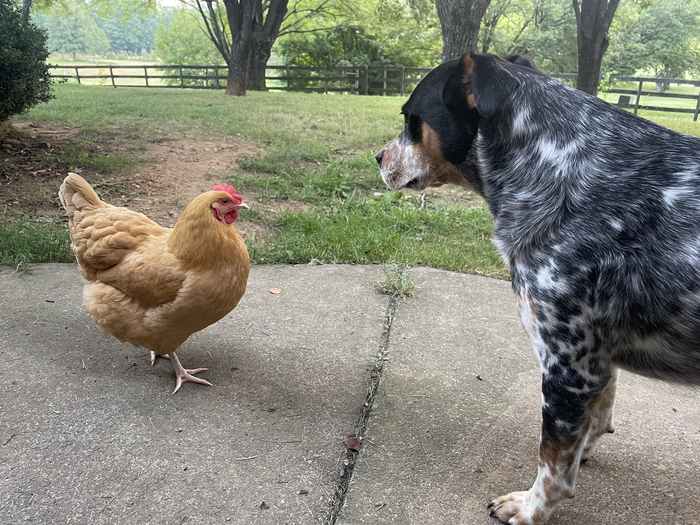
Step 2: Build the Right Foundation
The foundation of your coop is your first line of defense against predators, and you may be surprised at just how many predators are able to go under rather than over. A predator-proof chicken coop should always have some protection from below. First of all, choose if you want a raised chicken coop or an in-ground coop.
Raised Coops
Raised coops are best for chicken farmers that are situated in wet regions. They are the best way in which to protect your flock from predators that dig their way through a chicken coop. The floor needs to be raised by about 12 – 18 inches, creating an air barrier and making is hard for anything to tunnel themselves inside.
In-ground coop
If you opt for an in-ground coop, get yourself some ½-inch hard cloth wire and/or concrete. Hardware cloth must be buried at least 12 inches deep and is often used under the chicken run.
Concrete is the best predator-proof foundation under the chicken coop. It acts as a solid, impenetrable barrier. It keeps out all digging predators and is common practice in areas where there are foxes, rats, or badgers. Also, it is easy to clean with a high-pressure washer. Make sure the edges meet the coop walls snugly so there are no gaps. Also, slope it slightly for water drainage.
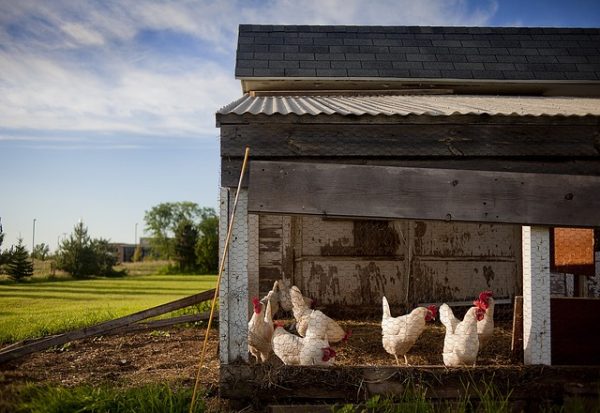
Step 3: Choose the Right Materials
Unfortunately, beautifully built chicken mansions offer your flock zero protection. And this can cause a devastating situation. Many make the mistake of using plans to create a lovely coop that often prioritizes style over security.
Materials That Work:
- Concrete and Bricks: Stone is impenetrable for all predators. Using concrete for the floor and bricks to build the coop walls provides an excellent basis for your chicken stronghold. Not just to keep out chicken predators, but also to resist storms and extreme weather.
- Hardware Cloth: Use ½-inch galvanized steel mesh. Chicken wire works well to keep your birds in but does little to keep predators out. Refrain from using chicken wire, as this will not be strong enough.
- Solid wood or metal framing: Treated lumber and steel frames can work wonders, especially against predators that try to chew their way through a chicken coop. They are also weather-resistant and can help to protect your chickens from freezing and hot temperatures.
- Exterior-grade plywood: Use solid plywood to reinforce the walls and floors of your coop. Make sure not to use any flimsy boards or pallets that are not going to serve as a barrier against predators.
This combination forms the foundation of a predator-proof chicken coop that can stand up to claws, teeth, and weather.

Step 4: Fortify the Coop Itself
Your chicken coop needs to be secure as a cabin in the woods and should act as a miniature house. Ask yourself, “would I feel safe in there?”. Why? Because your chickens live there!
Windows and Ventilation
- Even if your chicken coop already has screening, use hardware cloth to cover both the vents and windows.
- Always use screws and washers, not staples. Staples can easily be pulled out by menacing raccoons.
Doors and Access Panels
- Make sure that all the doors to the chicken coop are always closed tightly with no gaps.
- Always use two-step locks or carabiners on latches.
- Hook and eye-latches are so easy for racoons to get through, so avoid them altogether.
A predator-proof chicken coop should have no “easy entry points.” Each coop door should have at least two layers of closure: a latch and a lock.
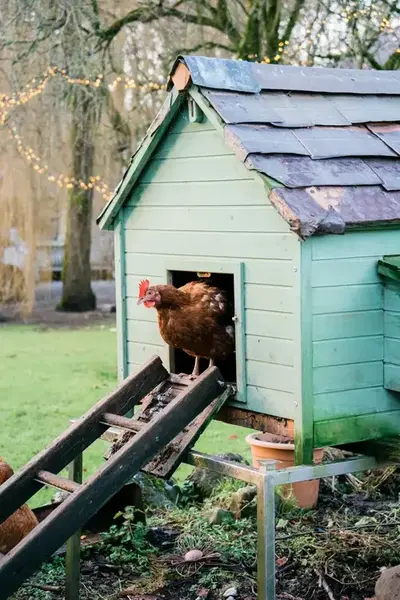
Step 5: Install an Automatic Chicken Coop Door
Life on a chicken far can be busy, and let’s face it, we are all human. Sometimes we may forget to lock up. But unfortunately, it is this mistake that can often cost you your entire flock.
A solar-powered or timed automatic chicken coop door can be extremely helpful. These open and close automatically by using sunlight or a timer to make sure that your chickens are safe, even when you are not there. There are many models available that have extra safety features, such as predator sensors or override buttons.
Step 6: Build a Secure Chicken Run
Your chickens spend a good part of their lives in the run, especially if they aren’t free ranging. So, make sure it’s just as secure as the coop.
A predator-proof chicken coop includes a run that is:
- Fully enclosed with hardware cloth on all sides, including the roof
- Protected with an underground mesh perimeter that has been buried or skirted.
- Covered at the top to prevent hawks or owls from swooping in and attacking your chickens.
You can also add a layer of shade cloth for UV protection and to conceal your birds from the eyes of predators.
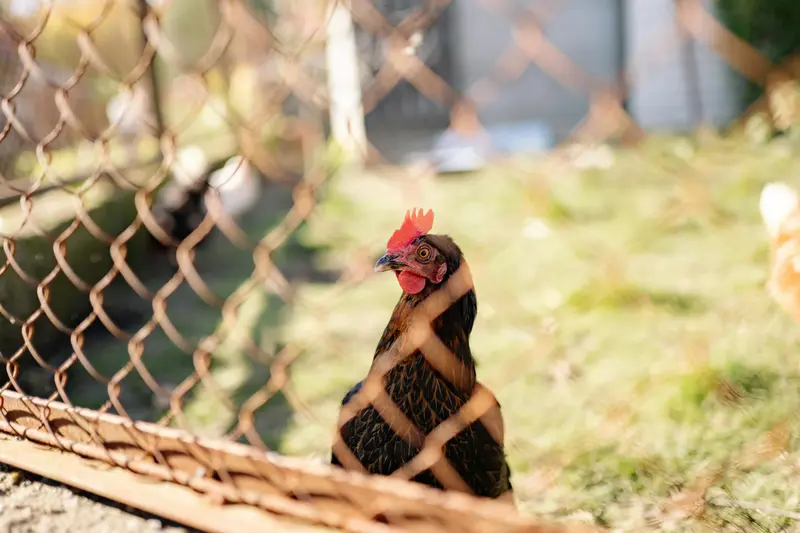
Step 7: Don’t Forget the Roof
Predators will drop in from above, so use solid roofing materials or hardware cloth to cover the roof of your chicken coop and run. Make sure that the roof panels are tightly secured with screws, and not just nails.
Your chicken coop roof should always be:
- Waterproof
- Well ventilated
- Predator resistant
Step 8: Add Extra Layers of Protection
A truly predator proof chicken coop uses layered defenses and doesn’t just stop at fences and latches. Here are some other things that you can add to your chicken coop:
Motion-Activated Alarms and Lights
Solar powered or wires motion lights and alarms around the coop can be used to scare predators away. Many predators dislike sudden light and will retreat. Personally, I prefer this solar-powered motion-activated alarm with flashing light. It has four different working modes to suit your needs, including an ultrasonic sound (on or off), and the choice of 24-hour or nighttime-only activation.
Solar “Predator Eyes”
Predator Eyes are small red LED lights that mimic the eyes of a bigger predator. They flash at night and work well to protect against foxes, coyotes, and raccoons.
Electric Poultry Netting
In high-risk areas, it is a good idea to surround the perimeter of your coop with electric fencing to add another level of protection and deterrence. This works well when it comes to climbing or digging predators.
Noise Deterrents
You can also use ultrasonic alarms or motion-activated sprinklers as these will startle predators, and keep them away from the coop.
Step 9: Eliminate Hiding Spots

A predator-proof chicken coop includes a fully maintained surrounding area. When a predator wants to get to your flock, they will stop at nothing to try and get to them. This includes finding a place to hide until they are ready to strike. Aways:
- Keep the grass around the coop trimmed.
- Remove brush piles, old wood, and debris.
- Use gravel or sand around the base of the coop to deter digging predators. This also makes it easier to spot tracks or tunnels.
Step 10: Practice Good Coop Hygiene
It is important, not just for your chickens to keep your coop clean and less attractive to predators and pests, like rats and rodents. Predators react to certain smells and leftovers, and once they find food they will keep coming back.
- Take away any uneaten food at night
- Collect all eggs daily
- Always clean up broken eggs or droppings
- Store feed in sealed bins
- Seal gaps or cracks that could be attractive to rodents
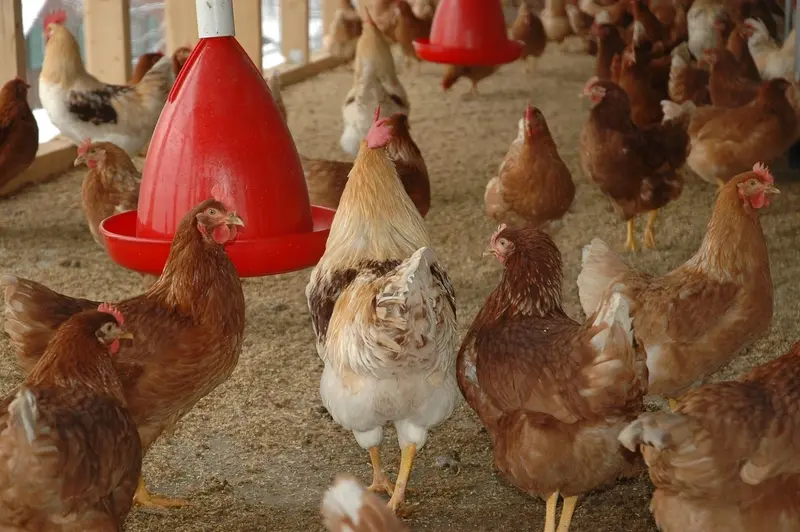
Step 11: Do Routine Inspections
Even the most protected coop can weather over time, which is why it is important to make regular times in which to inspect it. Always check:
- Fencing and mesh for rust, holes, or damage
- Doors and locks for wear or loose hinges
- Underground barriers for signs of digging
- Roof and vents for water leaks or gnaw marks
Try to take a weekly walk around your perimeter to check for any problems and make sure that your chicken coop is continually protected.
Step 12: Tech Tools for Peace of Mind
While it is not entirely necessary to spend thousands on high-tech gear, there are a few gadgets that can really help to keep your coop predator-proof.
- Wi-Fi security cameras allow you to monitor your flock remotely
- Trail cams can show you what predators are visiting at night.
- Night vision smart camera with motion detection that is linked to your phone. It has individual bird recognition, critter detection, and sends immediate alerts when necessary. Including daily updates on flock activities, and nighttime alerts to add extra peace of mind.
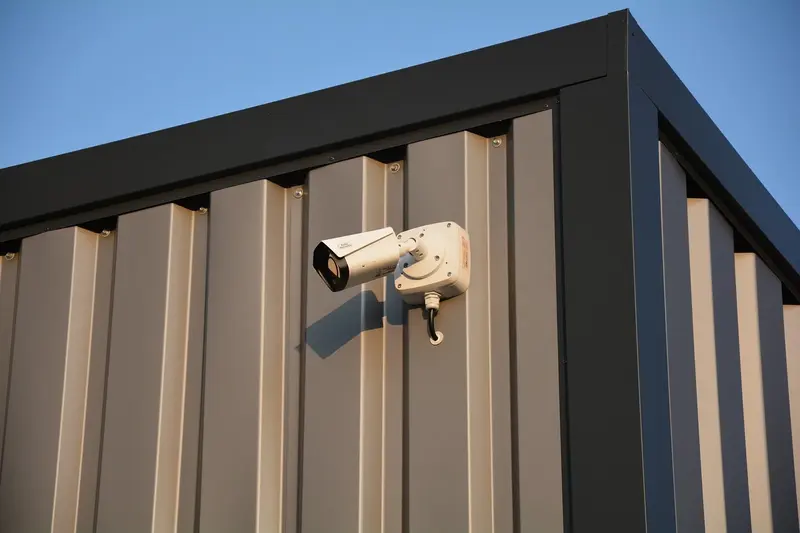
Step 13: Educate Everyone on the Homestead
Sadly, many coop breaches occur not from faulty construction, but from a forgotten lock or a door unintentionally left open. A strong predator proof chicken coop depends on human awareness.
- Make sure everyone knows to close and lock the coop at night.
- Involve your children in checking fences and spotting tracks.
- Keep a journal of sightings or signs of predator activity.
Final Thoughts: Peace of Mind for You and Your Chickens
While it may seem like a lot of work upfront, predator-proofing your chicken coop and run is one of the most important steps you can take as a responsible chicken keeper. It protects your investments and ensures the safety of your beloved birds. Each layer of protection that you add, will help you to sleep easy, knowing that your flock is snug, safe and secure.
A predator proof chicken coop isn’t built in a day. But it can save your flock in a single night!

